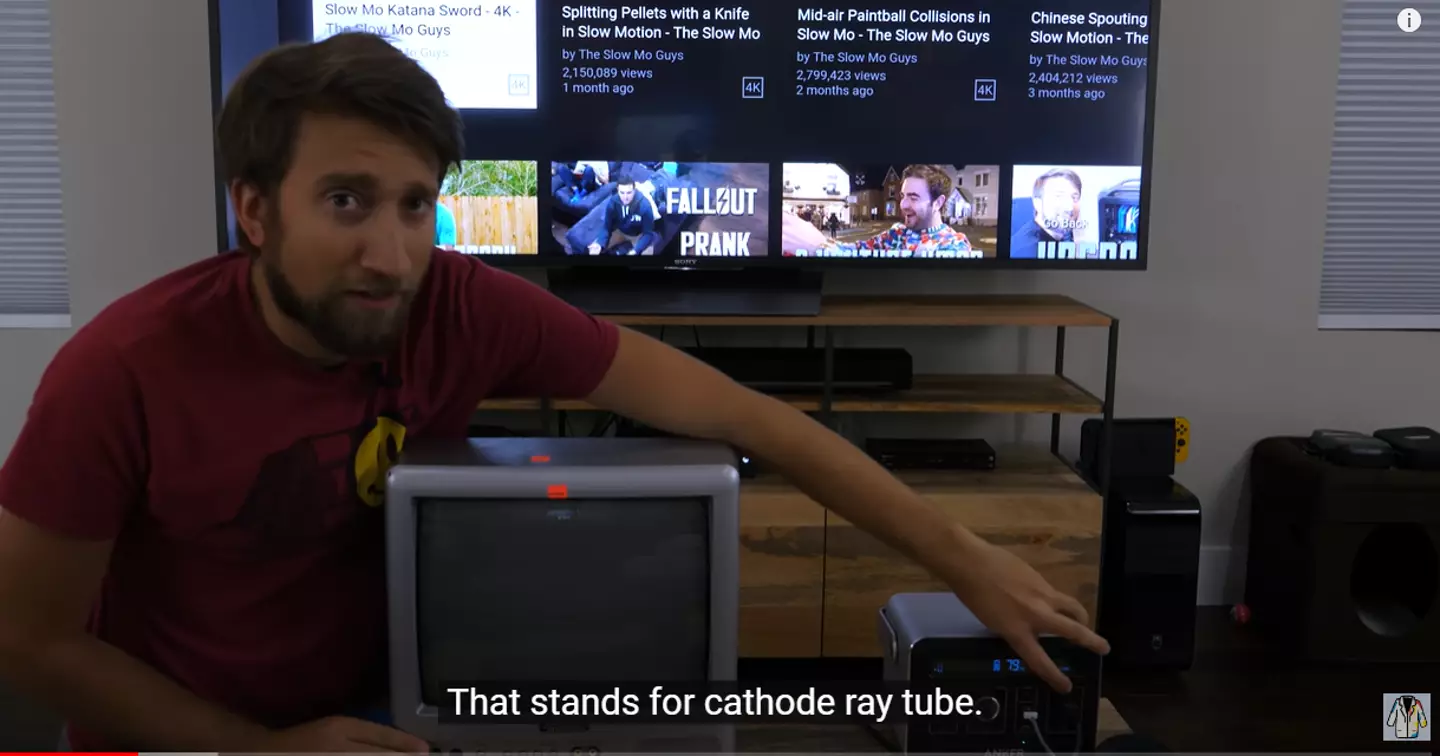
Your Christmas might be made up of lounging in front of the tele in your living room, bingeing the latest series with family and friends, but have you ever wondered how your TV actually works?
The Slow Mo Guys, known for their mind-boggling slow-motion videos, have taken a deep dive into the mechanics of televisions and it's nothing short of an eye-opener.
In the YouTube video, one half of The Slow Mo Guys, Gavin, begins the episode in his living room, setting the stage for an exploration of the inner workings of the goggle box.
Advert
But before you watch it, the video also contains an epilepsy warning "for those sensitive to flashing and flickering", so do take note.
He starts by reminding us that while we enjoy motion pictures, we're actually seeing a rapid sequence of still images.
For instance, a film displays 24 images per second, creating the illusion of movement, a concept that extends to video games and PCs, with frame rates varying from 30 to hundreds of frames per second.
Advert
To properly illustrate how a TV updates these images, Gavin uses an old CRT (cathode ray tube) TV. This type of television works by creating its frame from top to bottom numerous times a second - a process that he captures with some pretty unique high-speed footage.
Slowed down to 1600 frames per second, you can see the scan line moving from top to bottom. At 2500 frames per second, individual frames being built can be seen.
But the real magic happens when the camera speed is ramped up to 28,500 frames per second, as it reveals each line being drawn from left to right.
At an astonishing 380,000 frames per second, which we’re told is the highest frame rate ever shot on The Slo Mo Guys’ channel, the video captures the drawing of individual lines in epic detail.
Advert
It's really fascinating to get such an insight into the speed and precision of these - let’s face it - now very old and knackered TV sets.

Switching to modern LCD screens, the video shows just how insane the differences are.
Unlike CRT screens, where only the active line of pixels is bright, LCD screens maintain brightness across the entire image. This allows the full image to be visible as each scan line passes down the screen. The video even captures gameplay in slow motion, revealing the intricate workings behind each and every frame.
Advert
Next, Gavin delves into the illusion of color on TVs.
Using a macro lens, he gets up close and personal with the screen, showing us how each pixel is composed of red, green and blue “sub-pixels”. What we find here is that these sub-pixels vary in intensity to create millions of different colors.
“Every time on your TV you're looking at a white image, you're looking at tons of blue, green and red lights,” explains Gavin. “They're just so small they look like white to your eye."
Finally, Gavin takes us on a magical discovery of the most recent TV display tech: OLED screens. Here, he shows us how screen quality is vastly improved over earlier methods because each pixel is able to illuminate itself. And it’s this innovation that allows for those cinema-style images on mainstream TVs, with super deep blacks and ridiculously thin screen designs.
Advert
"Each pixel is self-illuminating, depending on how much voltage is passing through it, which means there's no global backlight on the TV,” says Gavin. “Each pixel is individually in control of how bright it is, and it's not being lit from behind."
He demonstrates this by showing us how, in areas of black on the OLED screen, all of those pixels are turned off. This is in contrast to LCD screens, where even dimmed pixels are part of a backlit display, which can lead to light leakage and less of a “true black” color representation.
So, the next time you’re stuffing your face in front of the TV, you can remind yourself about the years of innovation that have gone into making those images dance like magic in front of your very eyes.
